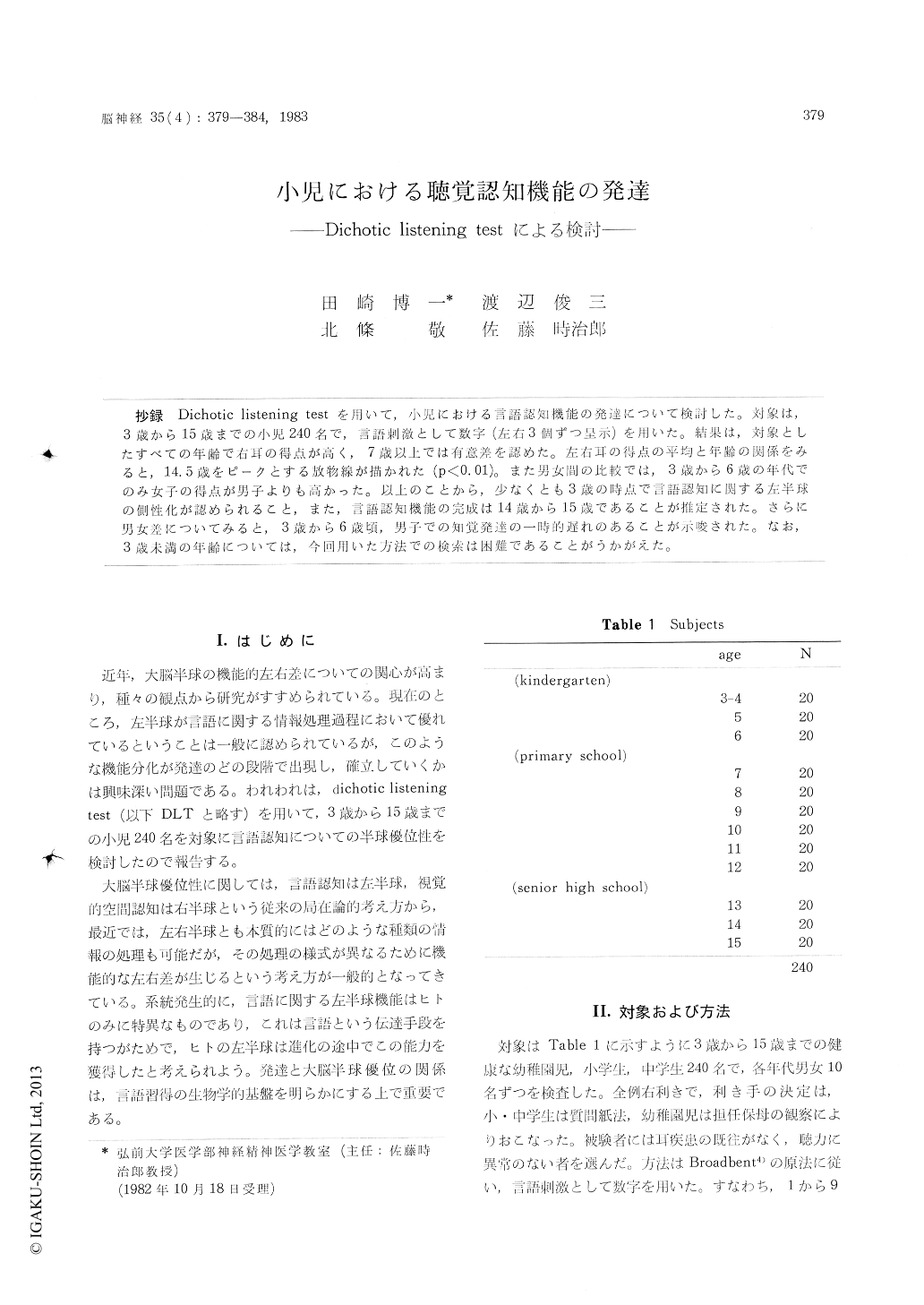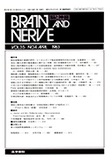Japanese
English
- 有料閲覧
- Abstract 文献概要
- 1ページ目 Look Inside
抄録 Dichotic listening testを川いて,小児における言語認知機能の発達について検討した。対象は,3歳から15歳までの小児240名で,言語刺激として数字(左右3個ずつ呈示)を用いた。結果は,対象としたすべての年齢で右耳の得点が高く,7歳以上では有意差を認めた。左右耳の得点の平均と年齢の関係をみると,14.5歳をピークとする放物線が描かれた(P<0.01)。また男女間の比較では,3歳から6歳の年代でのみ女子の得点が男子よりも高かった。以上のことから,少なくとも3歳の時点で言語認知に関する左半球の側性化が認められること,また,言語認知機能の完成は14歳から15歳であることが推定された。さらに男女差についてみると,3歳から6歳頃,男子での知覚発達の一時的遅れのあることが示唆された。なお,3歳未満の年齢については,今回用いた方法での検索は困難であることがうかがえた。
Dichotic listening test was investigated in 240 children (120 boys and 120 girls), aged 3 to 15 years old. The subjects were all right handed, normal children. Spoken digits were presented to the subjects in such a way that different digits arrived simultaneously at the two ears (Broadbent, 1954). A group of digits consisted of three pairs of digits. The total number of digits presented was 120, making a total possible score of 60 for each ear. Subjects were instructed to listen with both ears and to report orally (at age 3 to 6) or writing (at age 7 to 15).
The difference between scores for the two ears was evaluated with t-test. The each age group tested, digits arriving at the right ear were more efficiently recognized than at the left ear. The right ear superiority was significant over seven years old. There was a significant correlation between age and mean total scores. The relation was expressed by a regression curve representing a quadratic function, written as Y=-0.29X2+ 8.4X-10.8 (X=age in year, Y=mean total score, 3≦X≦15, R=0.78, P<0.01), and the peak of the curve was at X=14.5.
Digit stimuli are more correctly identified from the right ear than from the left ear. This results obtained by us suggest that the left hemisphere is to some extent specialized for speech perceptionas early as age of 3, and the function of speech perception completes by age of 14 to 15. Such a finding is consistent with recent evidence indica-ting that both anatomical and functional cerebral asymmetry appear to be present from birth.
There was no significant difference in mean total scores at the both ears between both sexes,although age 3 to 6 girls showed higher scores than boys. It is suggested that boys lag behind girls in the development of speech perception. This is simply a slower development rather than a permanent difference.

Copyright © 1983, Igaku-Shoin Ltd. All rights reserved.


